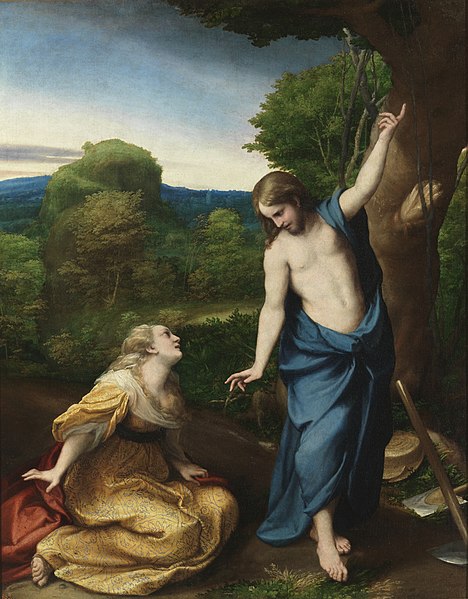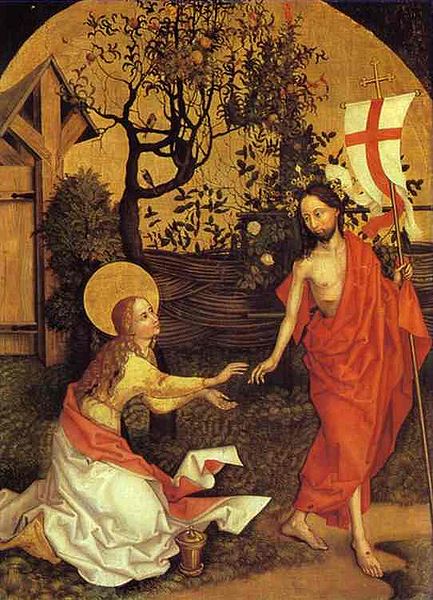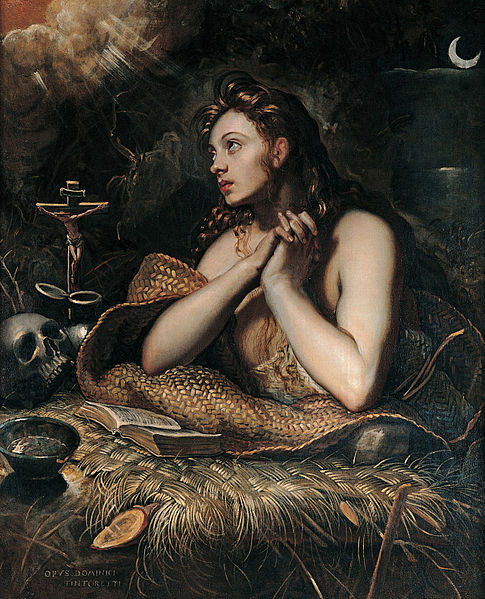Noli me tangere is the Latin version of a phrase spoken, according to John 20:17, by Jesus to Mary Magdalene when she recognized him after His resurrection. The biblical scene has been portrayed in numerous works of Christian art from Late Antiquity to the present. The phrase has also been used in literature, and later in a variation by military units since the late 18th century.
Noli me Tangere by Antonio da Correggio, c. 1525
Engraving by Martin Schongauer, 15th century
Noli me tangere fresco by Fra Angelico
Noli me tangere by Martin Schongauer
Mary Magdalene was a woman who, according to the four canonical gospels, traveled with Jesus as one of his followers and was a witness to his crucifixion and resurrection. She is mentioned by name twelve times in the canonical gospels, more than most of the apostles and more than any other woman in the gospels, other than Jesus's family. Mary's epithet Magdalene may be a toponymic surname, meaning that she came from the town of Magdala, a fishing town on the western shore of the Sea of Galilee in Roman Judea.
Mary Magdalene (c. 1598) by Domenico Tintoretto, depicting her as a penitent
Photograph taken c. 1900 of al-Majdal, a village standing among the ruins of Magdala, Mary Magdalene's hometown
The Conversion of Mary Magdalene (c. 1548) by Paolo Veronese
Detail of Mary Magdalene weeping at the crucifixion of Jesus, as portrayed in The Descent from the Cross (c. 1435) by the Flemish artist Rogier van der Weyden








